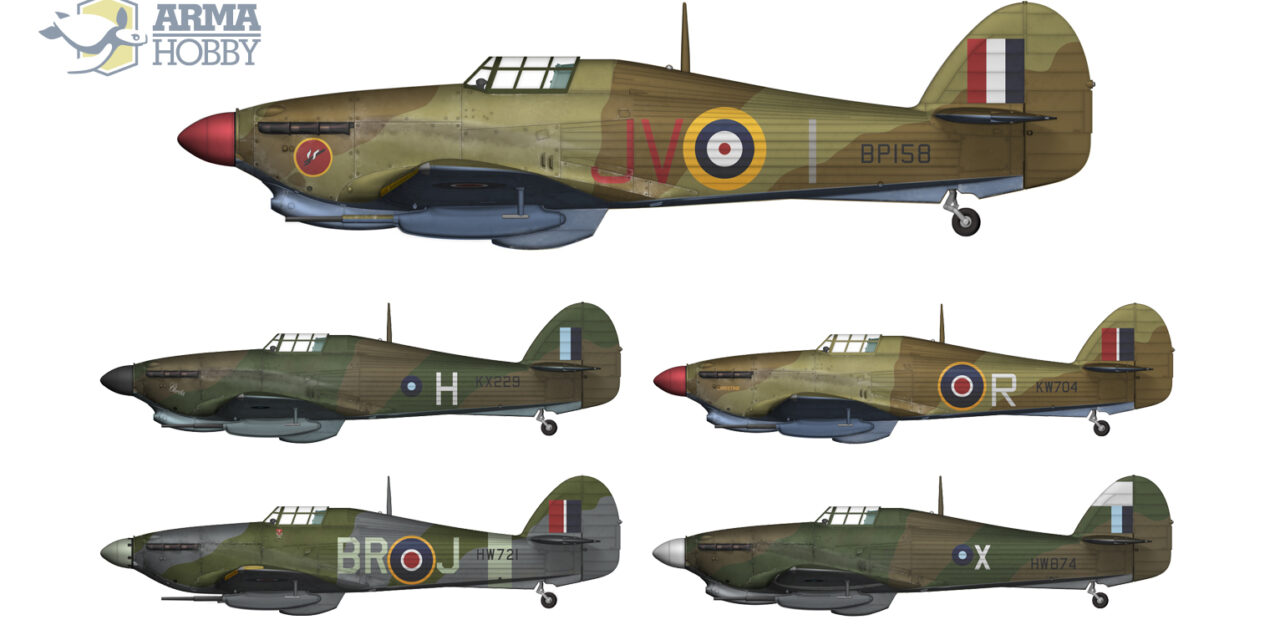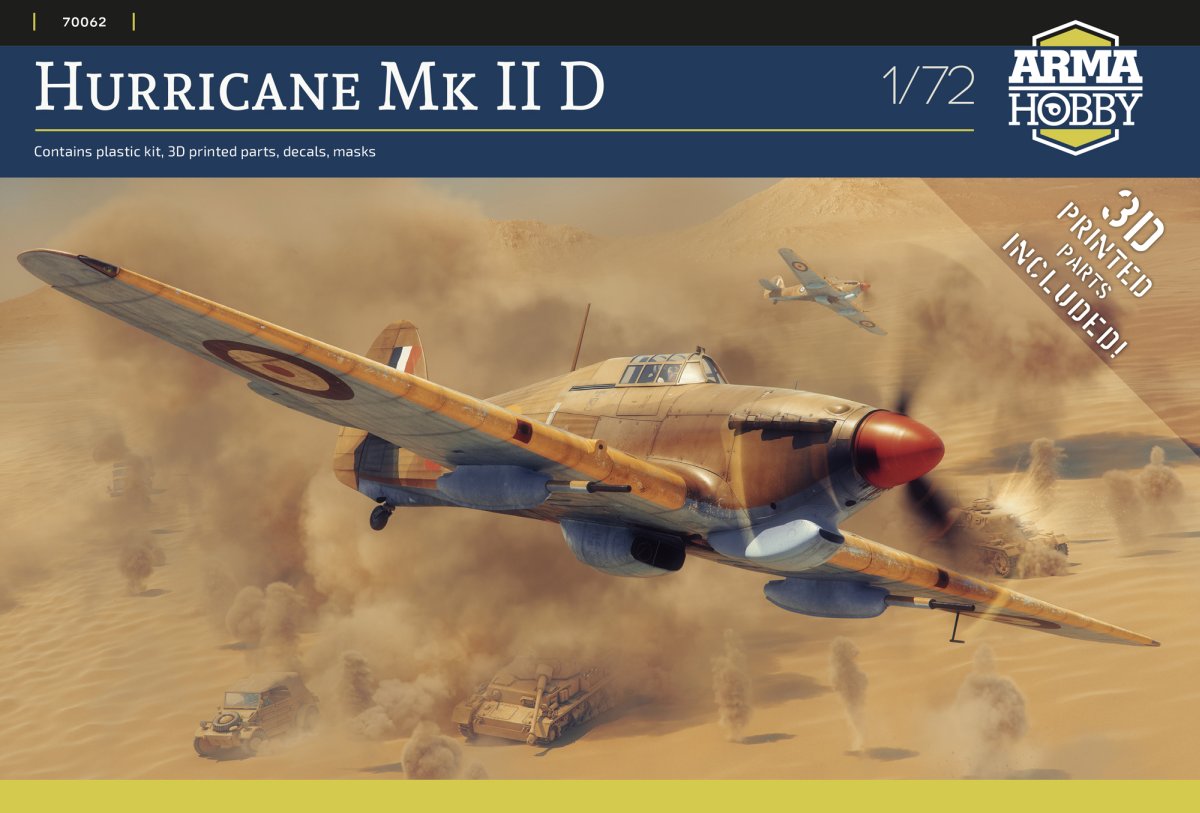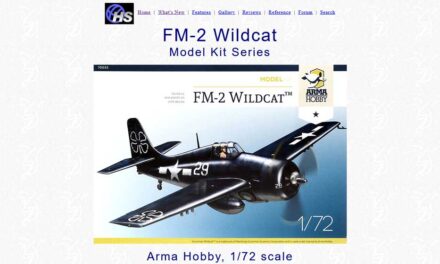“Faster, higher, stronger!” is primarily the motto of athletes, but it also rather aptly describes the efforts of combat aircraft designers. The tank-buster Hurricane Mk.IID was inspired by the last word of this Olympic slogan: stronger!
Cannon-armed aeroplane
The idea for an aeroplane to carry a weapon of larger calibre that would make life more difficult for the enemy had appeared already during the Great War. Initial tests of 37 mm and 47 mm (!) cannons were carried out on Voisin aircraft, which then had the distinction of becoming the first aeroplanes to use these weapons in combat.

Voisin IV LBS with 37mm cannon. Photo: Wikimedia Commons
In the summer of 1916, the great French ace Georges Guynemer himself suggested that cannons be mounted on the SPAD fighter. The task was undertaken by Marc Birkigt, the designer of Hispano-Suiza V8 engines, which in the version with a reducer could be fitted with a machine gun firing through the propeller hub without it being necessary to employ a synchronizer. After making the necessary modifications, Birkigt found space between the engine cylinders for a weapon far more brutal than a machine gun: the 37 mm SAMC semi-automatic cannon manufactured by Puteaux, which fired canister-shot cartridges containing nineteen lead balls. A completely new aircraft, the SPAD S.XIICa1, was built for the new engine plus cannon; it delighted Guynemer and allowed him to extend his list of victories by four confirmed kills in July and August 1917.

SPAD S.XIICa1, Photo: La contemporaine. Bibliothèque, archives, musée des mondes contemporains
Great War Aces
It was not, however, a fighter for the average pilot. Suffice it to say that the cannon was semi-automatic, that is, after each shot the breech-block remained open for manual reloading. In addition, after a shot was fired the cockpit would fill up with thick gunpowder smoke, forcing Guynemer to roll over, for he noticed that the smoke dispersed more rapidly when the aeroplane was flying upside down. At the same time, it would be necessary to load a fresh cartridge, to this end reaching quite far down to the breech-block, while not losing sight of the enemy and at once – if the first shot had been ineffective – preparing a successive attack. Clearly, there was a lot of work to be done, simultaneously and at speed, because the opponent would obviously not be waiting, disinterestedly, for another dose of lead.
There were never more than eight fighters so equipped in front line service, flown – apart from Guynemer – by such eminent pilots as René Fonck (eleven kills on an aircraft armed with a cannon), Charles Nungesser and Georges Madon. The design was insufficiently mature, and the aircraft were plagued with technical problems – so much so that when attempts at eliminating vibrations of the reducer proved unsuccessful, it was decided to employ the simplest solution, that is, increase the number of standard machine guns.

René Fonck, most effective French Ace of the Great War at his SPAD S.XIICa1, Photo: La contemporaine. Bibliothèque, archives, musée des mondes contemporains
This story is directly connected with the Hurricane by the person of Marc Birkigt, the designer of the engine and reducer which made possible the installation of a cannon on the SPAD XII, who a dozen or so years later developed the excellent 20 mm Hispano-Suiza HS.404 gun, which was produced under license in the United Kingdom and was introduced throughout RAF Fighter Command starting in 1941.
Inter-war experiments
In the USSR, a country which always harboured ambitions of achieving “more” and on a greater scale, and had at its disposal practically unlimited resources for the development of various progressive prototypes, fighters were built armed with the Kurchevsky 76.2 mm APK recoilless gun, which in theory was to cope with bombers more efficiently than machine guns. The Grigorievich design bureau came up with the I-7 fighter (also known as the I-ZET), while the Tupolev bureau developed the ANT-23, the main designer of which was Chernyshov. The I-7 was actually manufactured, in a series comprising seventy-two units, in the years 1934–1935, and subjected to lengthy tests, however the technical problems posed by its innovative armament proved impossible to surmount. The homeland of the proletariat invested enormous amounts in the development of recoilless weapons, so when in 1936 the project ended in a fiasco, the cannon designer was accused of sabotage and sentenced to death alongside Marshal Tukhachevsky, who was responsible for army procurement. The sentences were carried out. The same fate befell Chernyshov, the designer of the ANT-23.
In Great Britain, too, the advantages of using larger calibre gun armaments were noticed early on, however the focus was on combatting shipping and ground targets. The first such weapon, the 37 mm COW (Coventry Ordnance Works) automatic cannon, appeared in 1918, and attempts were made to mount it on the D.H.4 aircraft. The implementation of further concepts for the use of cannons, including the newly-developed recoilless models, was interrupted by the end of the war, but they were by no means forgotten by constructors. Quite naturally, the idea of rapidly destroying an enemy was tempting, and it was additionally noted that standard machine guns would not be effective against large, multi-engine bombers, which according to the Douhet doctrine would decide future conflicts.
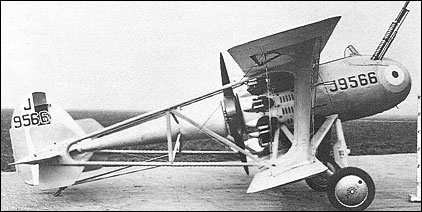
Vickers Type 161
Towards the end of the 1920s, the British elaborated requirements for a fighter that would provide specialized defence against bombers and be armed with the aforementioned COW 37 mm automatic cannon. Two prototypes were built, armed with a cannon that was inclined upwards so as to hit bombers from below, and thus beyond the reach of their defensive weaponry. The Westland Gun Fighter and Vickers Type 161 were tested in 1931, but although the latter met requirements, the concept of point defence – of fighter aircraft that would in essence function as a platform for light anti-aircraft artillery – ceased to interest the RAF, and the Vickers Type 161 did not enter mass production. This aeroplane, renowned for its extreme ugliness, is important to our story in that Vickers took over the Coventry Ordnance Works and thus its 37 mm automatic cannon, which following far-reaching modifications became known as the Vickers 40 mm “S” Gun.
40 mm Vickers „S” Gun

Cannon under the Hurricane IID wing. Photo – still from the film, Imperial War Museum collection GEN 2
- Total length 297 cm/9 feet 9 inches
- Total weight 175 kg/385 pounds
- Rate of fire 100 shots per minute
Automatics based on the principle of recoil operation; horizontal wedge breech; fed from a drum magazine – in later versions fed by a metal cartridge belt. Specially developed to destroy armoured targets, the 3-pound projectile had a relatively low muzzle velocity of 1,870 ft/s, that is, 570 m/s. To this, however, we should add the speed of the aircraft, which totalled approximately 350 ft/s (approximately 110 m/s). This allowed the weapon to penetrate 51 mm of armour from a distance of 700 yards at an impact angle of 20 degrees, and 58 mm of armour at a distance of 400 yards.
Work on the Vickers cannon was accompanied by attempts at developing an aerial version of the Rolls-Royce 40 mm Type BD Naval Gun. This weapon was in some respects better, as it was lighter, had a higher rate of fire (up to 250 shots/minute), and offered a slightly greater muzzle velocity.
Hurricane against Blitzkrieg
The very idea of installing armour-piercing cannons on an aircraft and combatting tanks from the air was undoubtedly related to how German armoured forces were used during the Blitzkrieg of 1940. An airborne anti-tank artillery that would be ready to intervene at the summons of ground troops at any point along the axes of attack of German armoured divisions would significantly increase the chances of defenders.
Design work on adjusting the wing to carry 40 mm cannons commenced at the Hawker Experimental Design Office in late May 1941. The first Hurricane armed with the Vickers “S” Gun was test flown on 18 September 1941; it was a modified Mk.IIa (Z2326), and in addition to its main armament it was fitted with a pair of tracer-firing machine guns which facilitated aiming. The Rolls-Royce cannons were also tried out on the same aircraft. But its inferior reliability – evidenced by frequent jamming – resulted in the Vickers design being chosen for the Hurricane Mk.IID.
The first Mk.IIDs were produced in February 1942, and most were sent to No. 6 Squadron RAF in Egypt towards the end of April 1942. The unit had previously been cooperating with the army, and, possessing no previous experience of such weapons and the necessary tactics, quickly commenced training, so that at least one flight could achieve operational status by the end of May 1942. The squadron acquired a damaged PzKpfw IV and had it towed near the base in Shandur, where the hulk served as a target for its pilots.

Hurricane training attacks against German tank wreck. Photo – still from the film, Imperial War Museum collection GEN 2
The Vickers cannon proved to be extremely accurate in practice, with a dispersion of under three feet at a distance of 600 yards; during tests, pilots always scored more than 50% of hits, and in some attacks, when shooting at a target the size of a tank, even more than 80%. In combat conditions, precision was undoubtedly reduced, however we can estimate that in a properly conducted attack, during which the pilot fired three salvoes, at least two projectiles out of six hit the target. The Mk.IID’s Vickers “S” could penetrate all German and Italian armoured vehicles used in Africa up to that point, and only the PzKpfw VI Tiger, with 82 mm thick side and rear armour, was resistant. However, these tanks entered battle only in December 1942 and did not significantly impact the outcome of fighting in Africa.
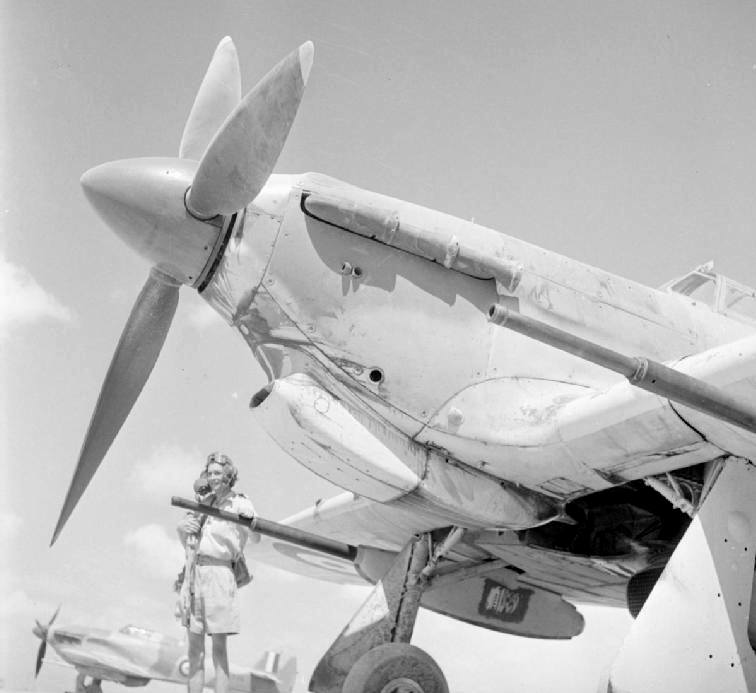
Hurricane Mk IID, Shandur airfield. Photo: Imperial War Museum/Wikimedia Commons
There are, however, some mysterious photographs showing the Tiger’s side armour allegedly pierced by the Hurricane Mk.IID’s cannon. Taking into consideration the gun’s technical specification and the thickness of the tank’s protective plating, such a situation should not have occurred. I cannot explain whether the accuracy of the British gun was underestimated, or if the picture shows the effects of gunfire from a different weapon.
The intensive training did not result in any losses of personnel, and only one aircraft equipped with the cannons was damaged in a landing accident.
About anti-tank Hurricane combat operations – in the second part of the article, soon!
Check also:
- Order the Hurricane Mk.IID online at Arma Hobby store
Model maker for 45 years, now rather a theoretician, collector and conceptual modeller. Brought up on Matchbox kits and reading "303 Squadron" book. An admirer of the works of Roy Huxley and Sydney Camm.
This post is also available in:
 polski
polski


